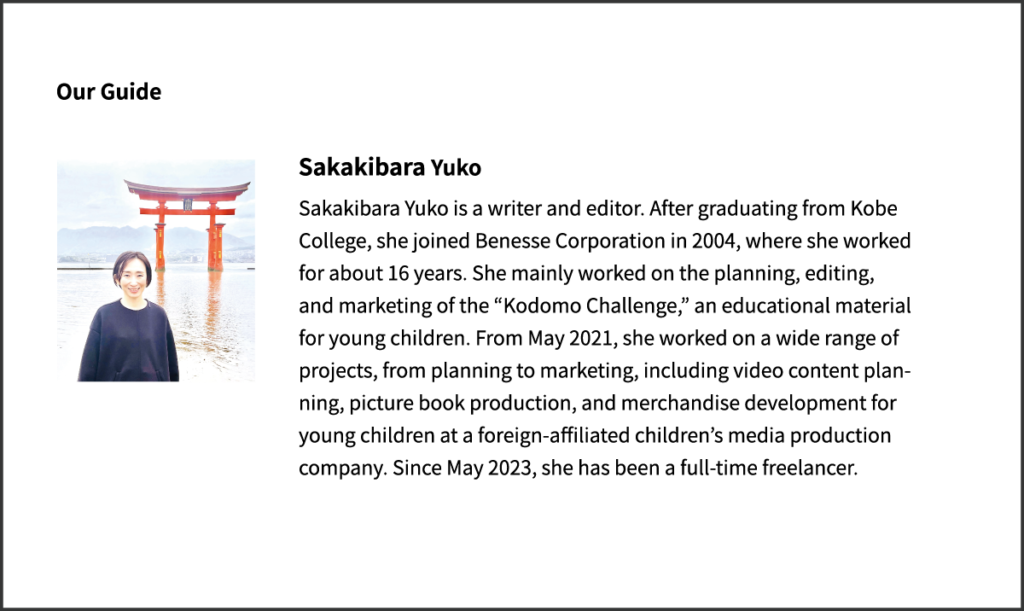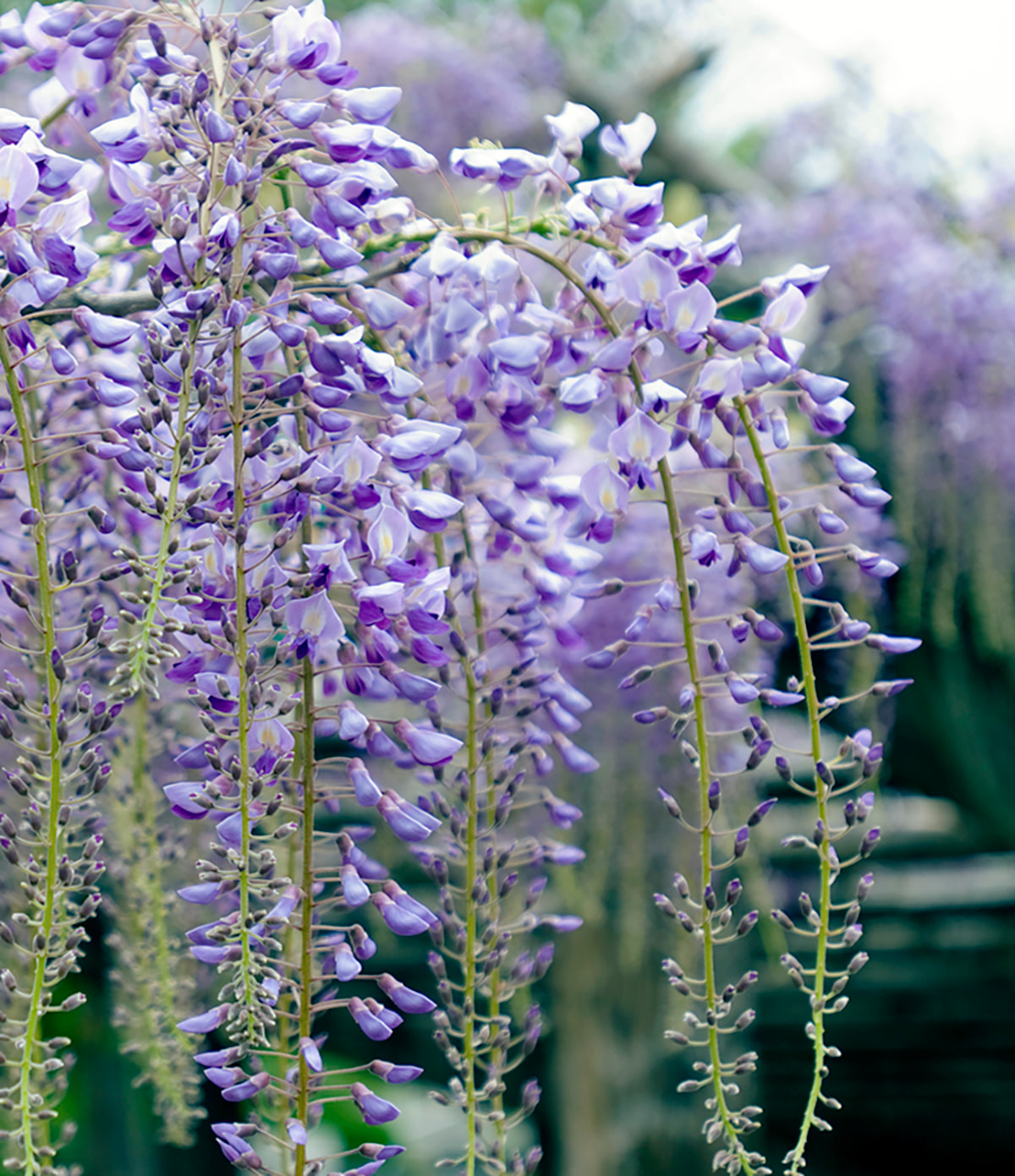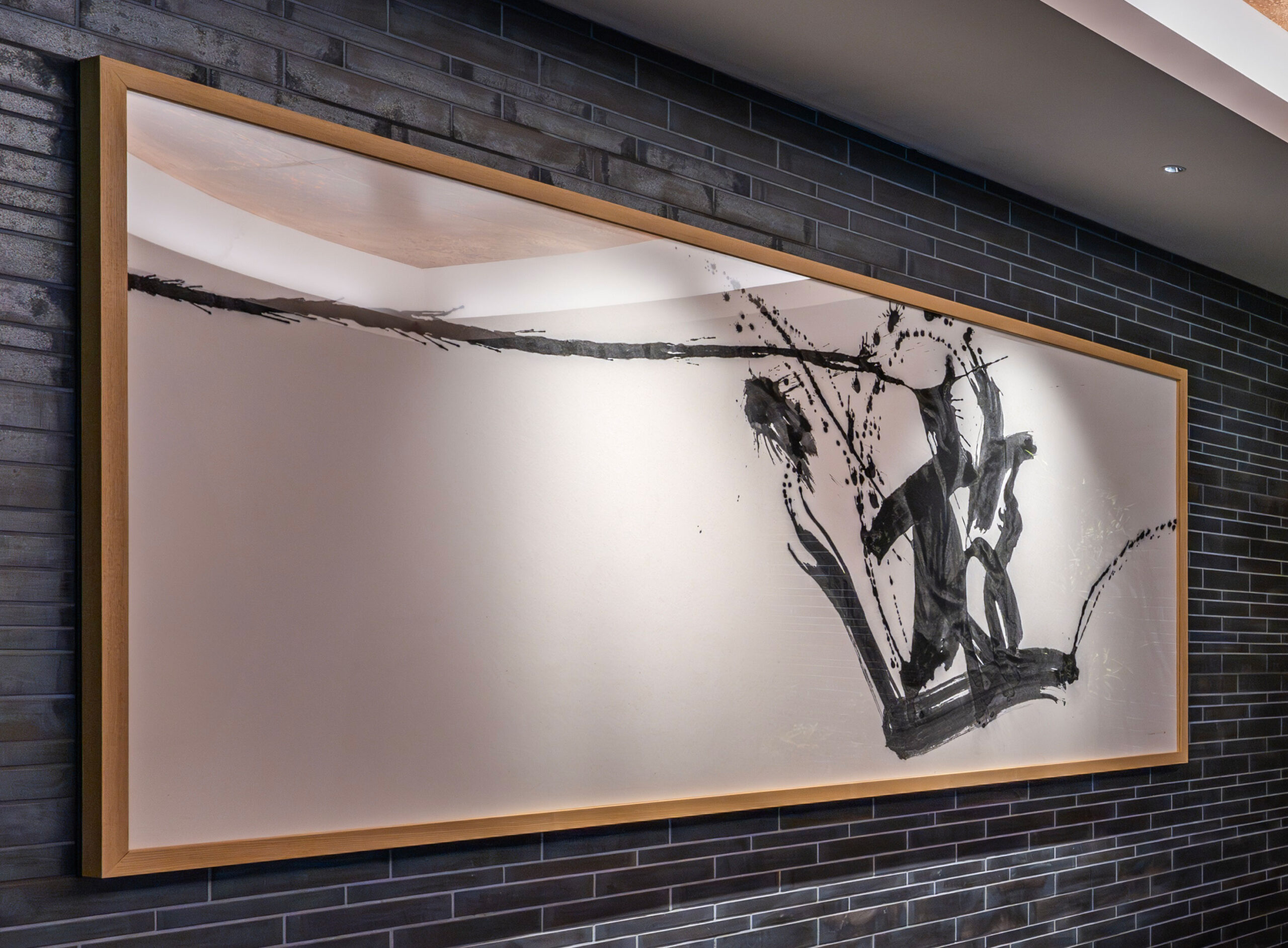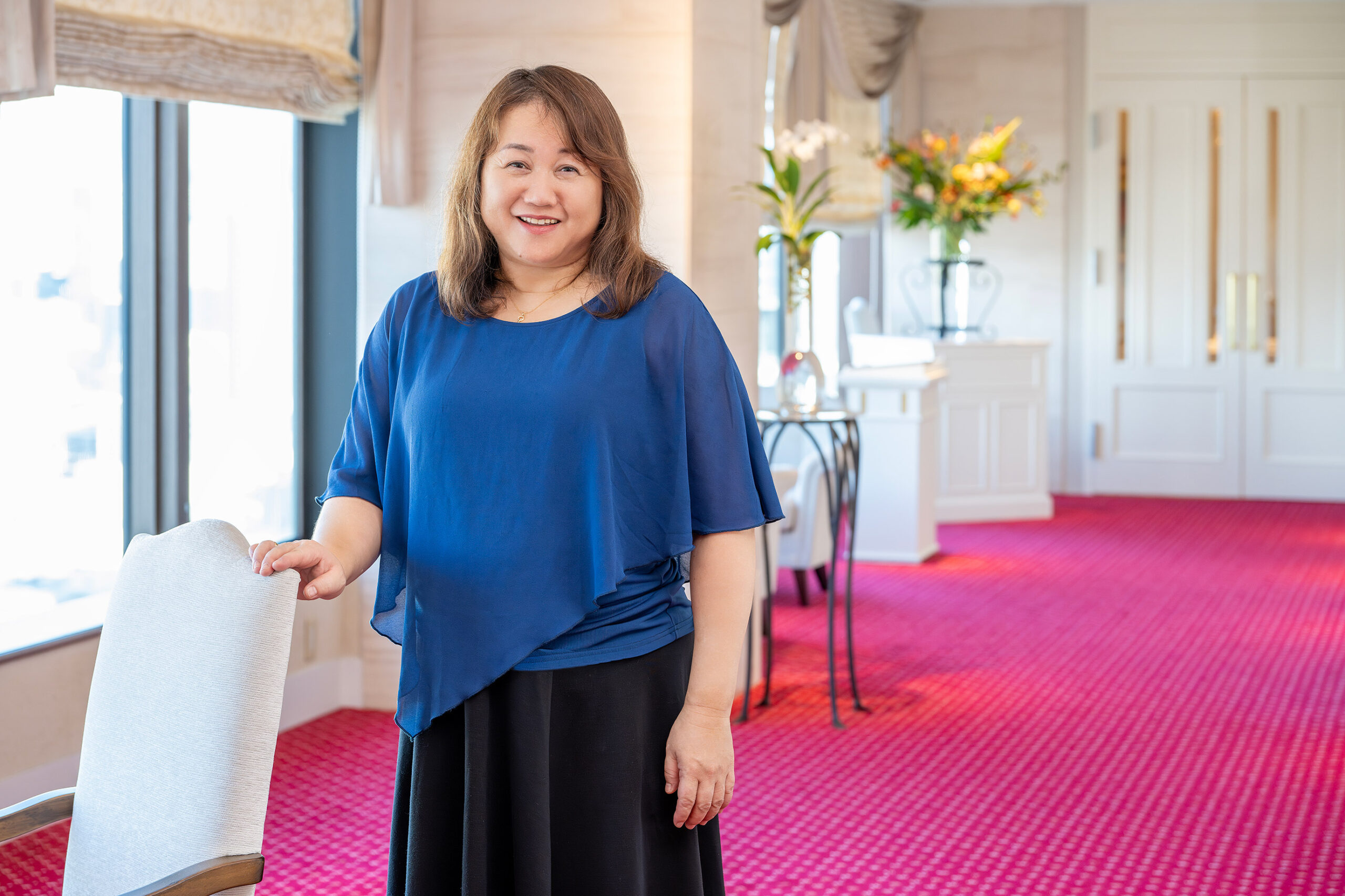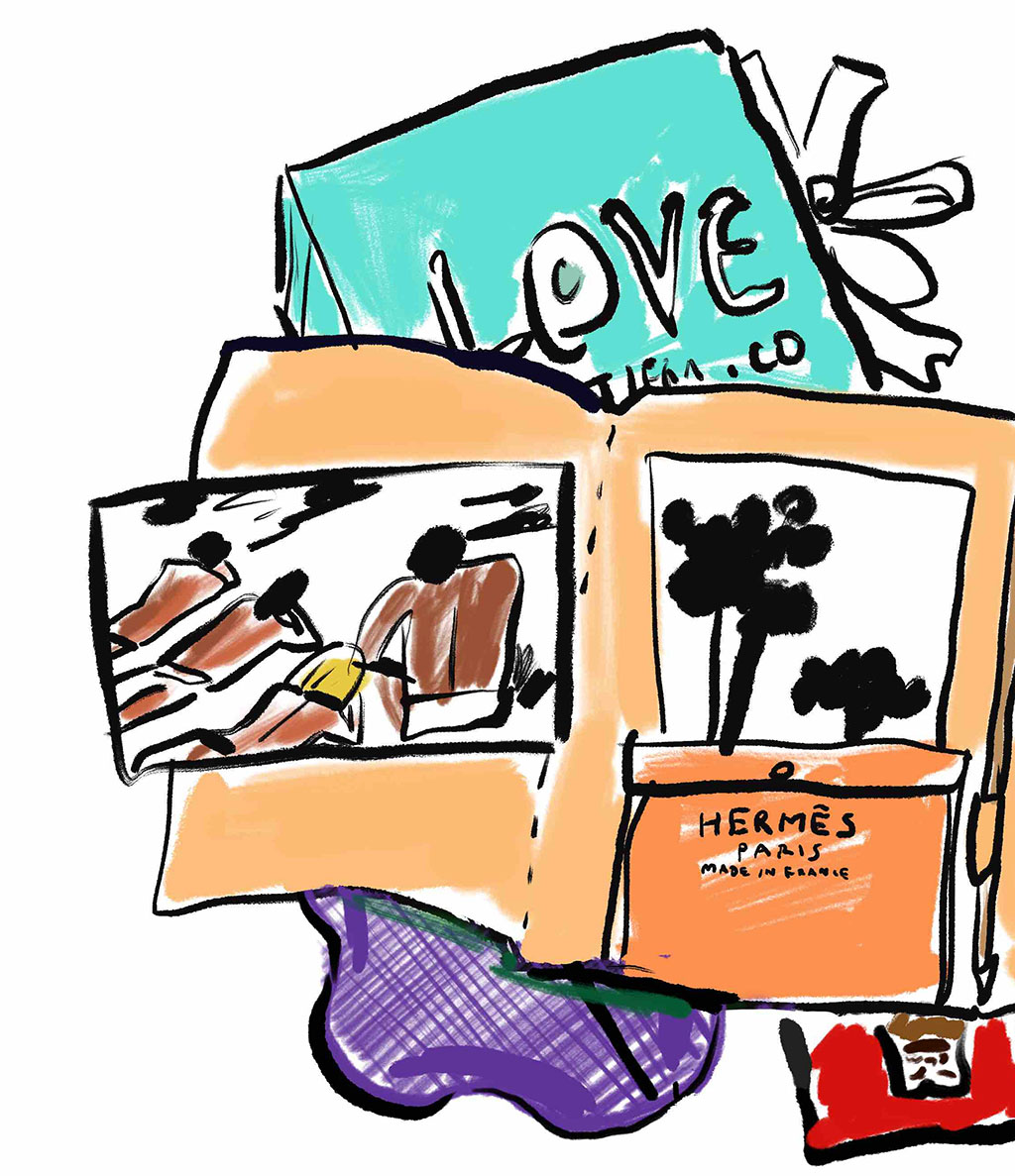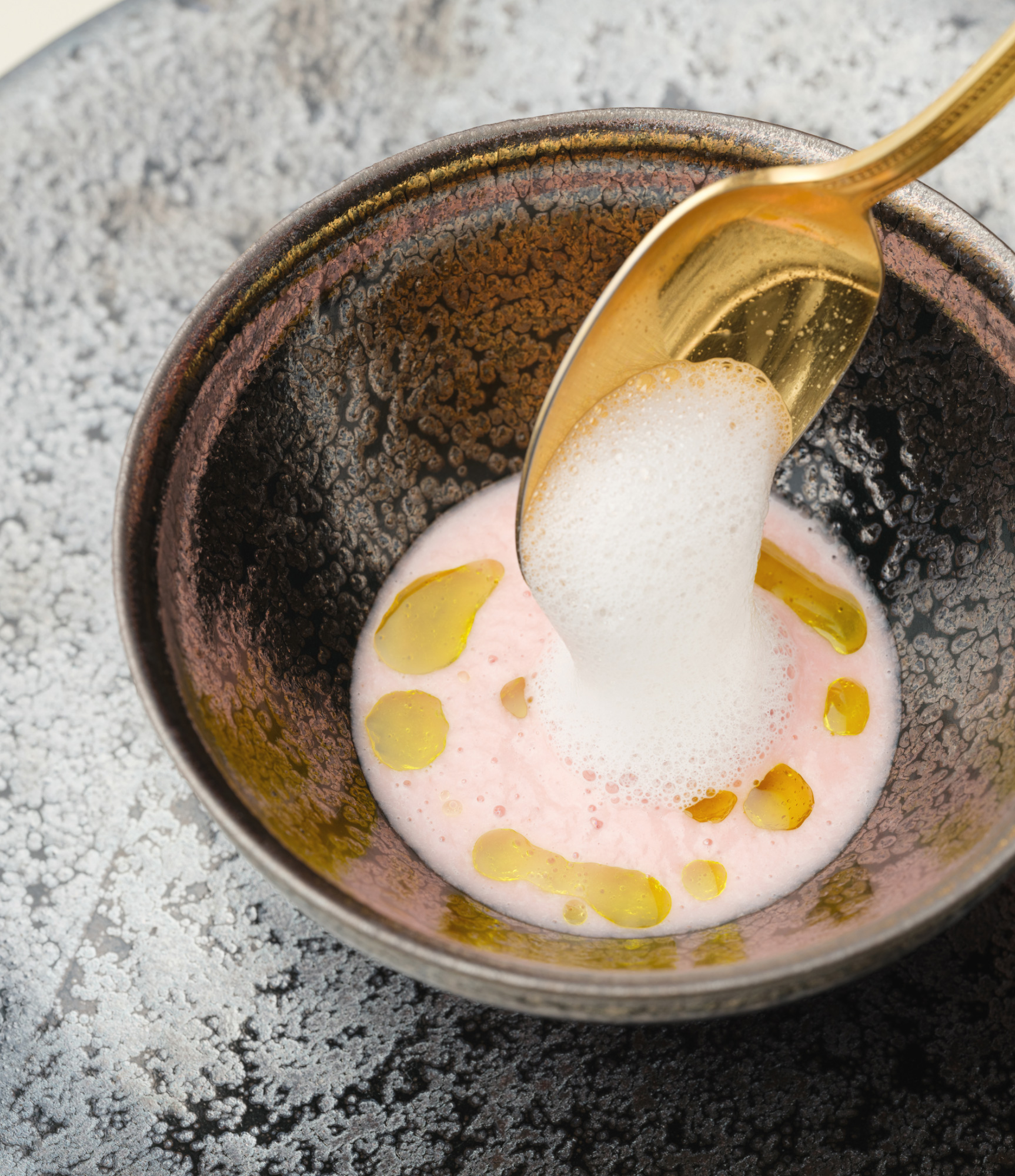
“Learn, Feel, and Experience”“Tabiiku” in Miyajima in Summer
An Excursion from the RIHGA Royal Hotel Hiroshima
The term “Tabiiku” (literally translates to “travel education”) has gained popularity in recent years. It refers to providing children with opportunities to nurture their minds, bodies, and brains through various experiences while traveling and being away from their daily routines. It considers traveling not just for fun but also for education.
Today, with Sakakibara Yuko, a freelance editor who has worked on the planning and editing of children’s education books at Benesse Corporation, we are taking a trip to Miyajima, Hiroshima, which has gained much attention as the leaders of the world gathered at Itsukushima Shrine for the G7 Hiroshima Summit in May.

An Enriching Adventure for Kids and Parents
From the RIHGA Royal Hotel Hiroshima, we headed to Miyajima by taking the Hiroshima Electric Railway streetcar for about an hour, followed by a ferry ride from Miyajimaguchi.
This was the first trip I ever took with just my daughter, who is now in elementary school. The theme of the trip was “Tabiiku,” which is not just about having fun but also about educating children through their own discoveries and insights gained during a trip.
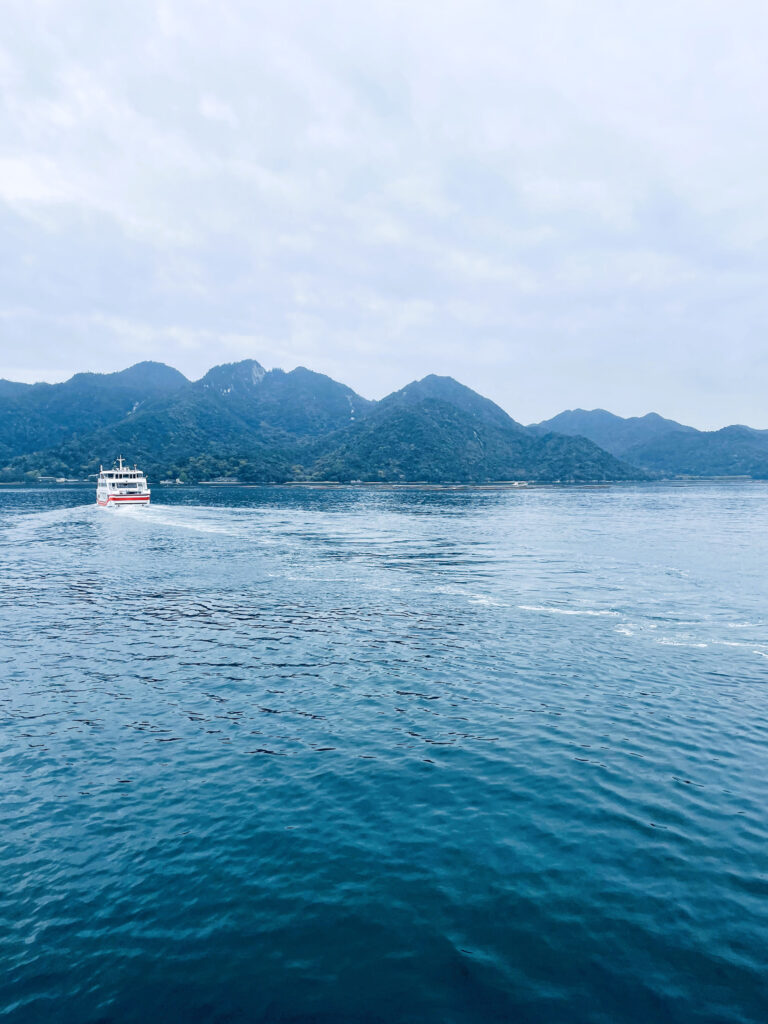
The ferry was crowded with many tourists. As we looked out to the sea, enjoying the cool breeze of early summer, the beautiful vermilion Otorii (Grand Torii Gate) caught our eye. All of a sudden, cheers erupted in various languages. Needless to say, Miyajima is a popular tourist destination where many people from all corners of the world gather.
A majestic World Heritage Site, Itsukushima Shrine
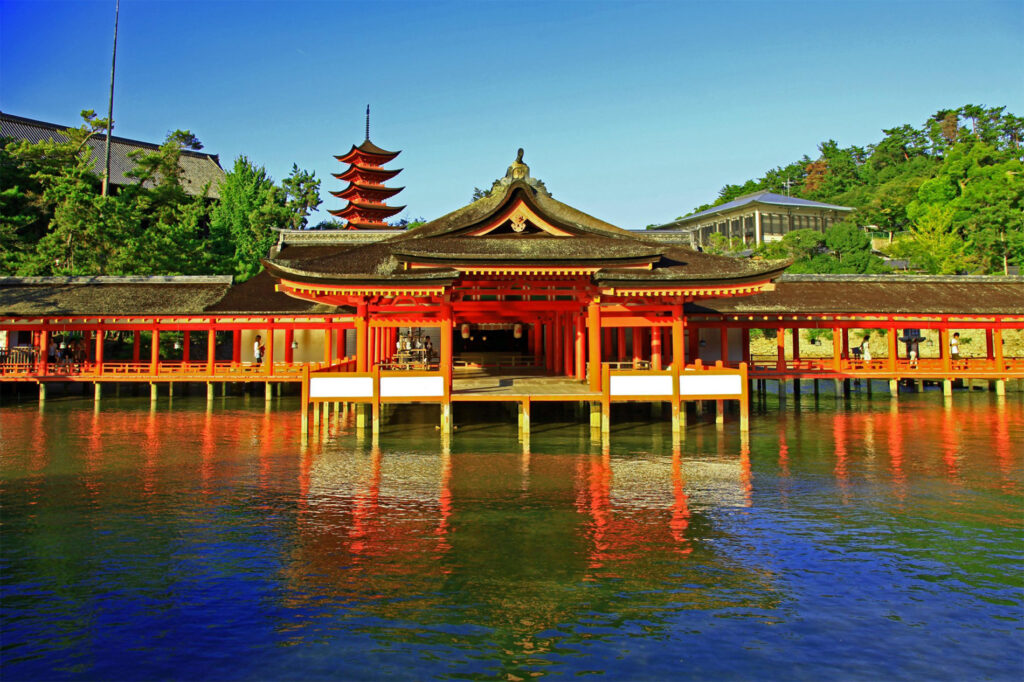
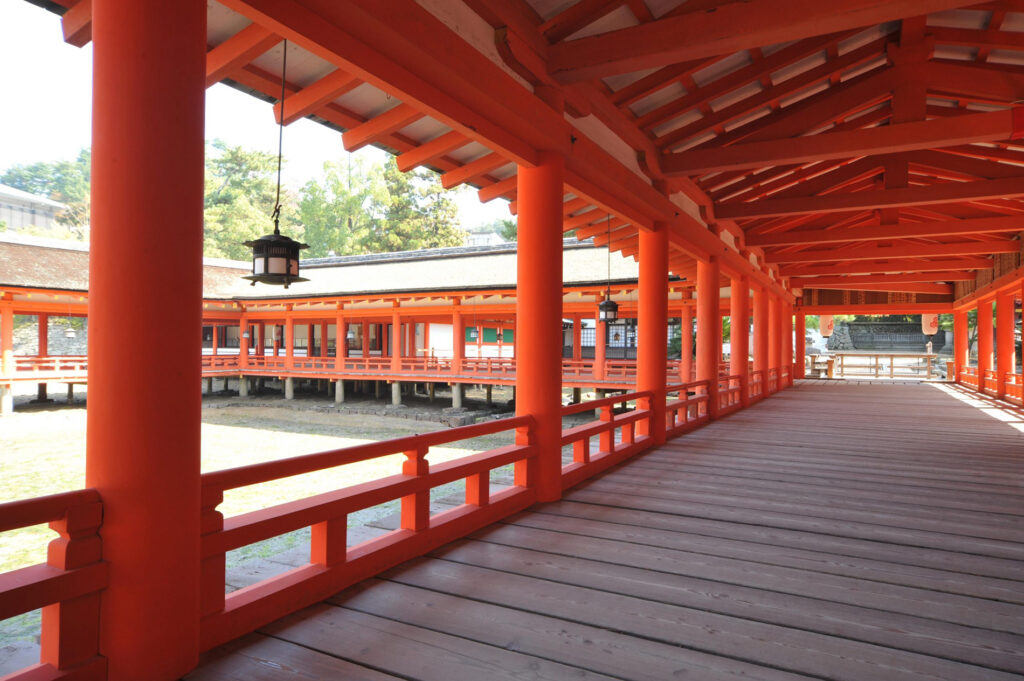
Photos provided by Hiroshima Prefecture
An adorable group of deer greeted us as soon as we arrived at the Miyajimaguchi Pier. After a 15-minute walk, we finally arrived at Itsukushima Shrine, a World Heritage Site.
Itsukushima Shrine is said to have been built during the reign of Emperor Suiko and was remodeled into the current shinden-zukuri style by Taira no Kiyomori in 1168. Entering the premise, visitors cross a U-shaped corridor to reach the main part of the shrine. The shrine is built in the Seto Inland Sea, so its structure is unlike any other shrine. With its unique appearance that children are not familiar with, the shrine fascinated my daughter. “It looks like it’s floating on the sea!” “I wonder why people built it here in the olden days.” She asked many questions. The shrine entertains everybody without boring them, even young children.
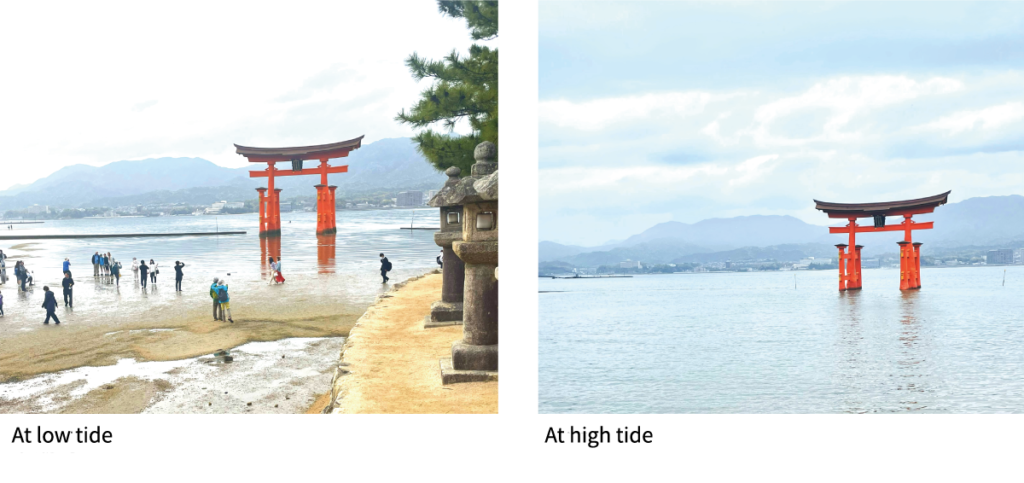
We arrived at Miyajima during low tide, and there were many families and tourists enjoying digging clams, so we decided to go near the Otorii on foot. It was fun walking on the sandy beach, feeling clam shells moving under our feet, and we could see the elegant Otorii standing in the sea up close.
The high and low tides come twice a day, each approximately every 12 hours, which means the high tide comes about 6 hours after the low tide. When we went back to see the Otorii again at high tide, we found that the Otorii had changed drastically in appearance from when we saw it for the first time. “The height of the water is totally different from before!” My daughter’s voice echoed with excitement. Seeing the difference in the height of the water and in the appearance of the Otorii, my daughter seemed to understand the concept of the ebb and flow of the tide, which is not easy to understand. The wonder of the sea has given her a great learning opportunity.
Itsukushima Shrine
1-1, Miyajimacho, Hatsukaichi, Hiroshima
Phone: +81(0) 829-44-2020
Opening Hours: 6:30~18:00 (Opening Hours change depending on the season)
Admission:
Adults ¥300
High School Students ¥200
Junior High School Students and Elementary School Students ¥100
Encountering nature and creatures of the Seto Inland Sea
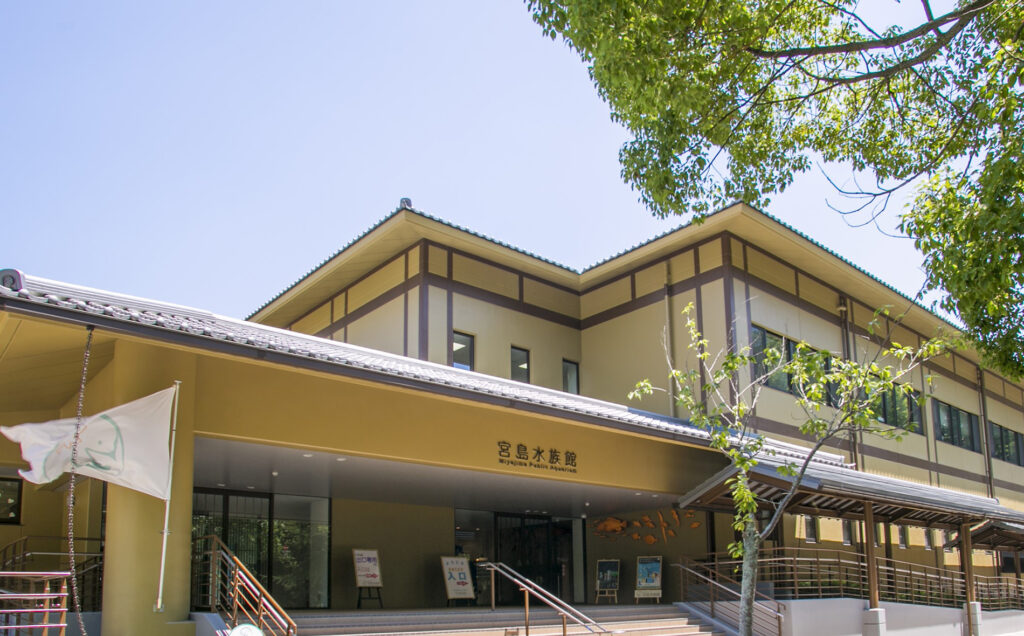
After walking for about 5 minutes from the Itsukushima Shrine exit, we arrived at the Miyajima Public Aquarium,also known as “Miyaji Marine.”. The Miyajima Public Aquarium exhibits more than 15,000 creatures of about 380 species, mostly native to the Seto Inland Sea, with a focus on “healing powers” and “interactions.”
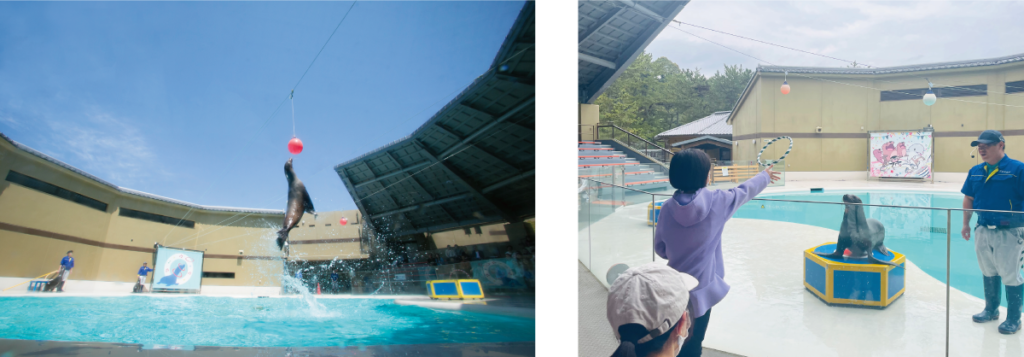
You can throw a ring for sea lions to catch. (right)
Photos provided by Miyajima Public Aquarium
The sea lion show takes place three to four times a day, and you can watch the dynamic jumps of sea lions right in front of your eyes. Moreover, the “interactive sessions,” in which visitors can throw rings and have them caught by sea lions, are available to a limited number of people. My daughter said, “The sea lions are watching the keeper’s hand movements and waiting for instructions,” and “They eat a lot of fish all at once.” Through close interactions with animals, children can discover and learn a lot of new things.
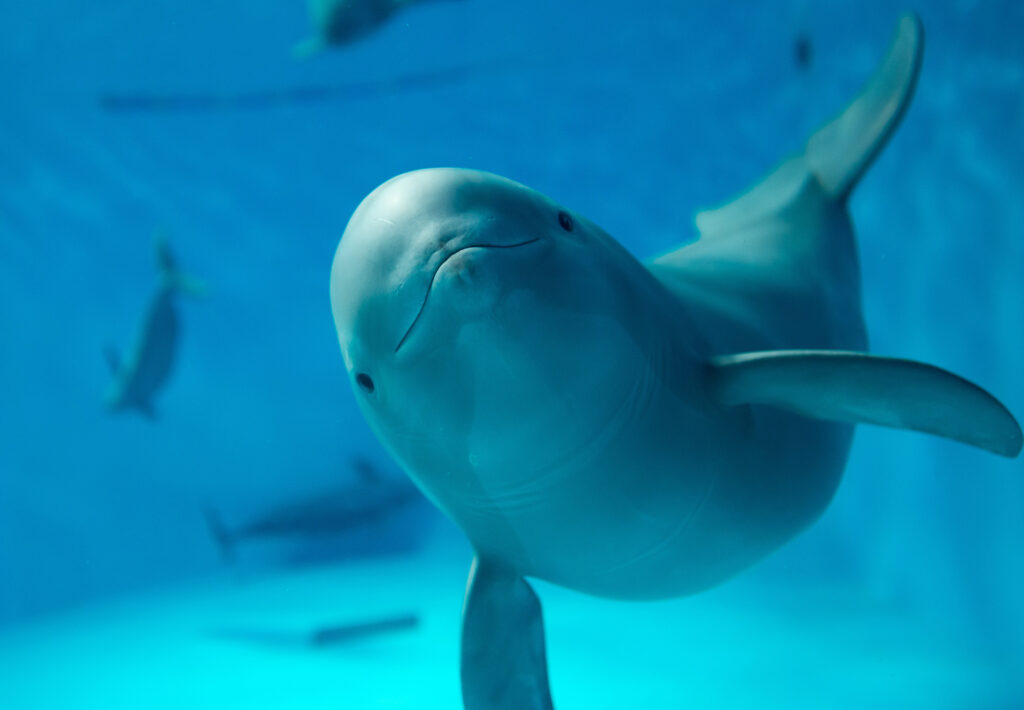
Photos provided by Miyajima Public Aquarium
After that, we moved on to the display of the only cetacean that lives permanently in the Seto Inland Sea, the finless porpoises. The cute expressions on their faces and the way they swam were fascinating. You can also meet “Miharu,” a baby finless porpoise that just turned one year old in May of this year.
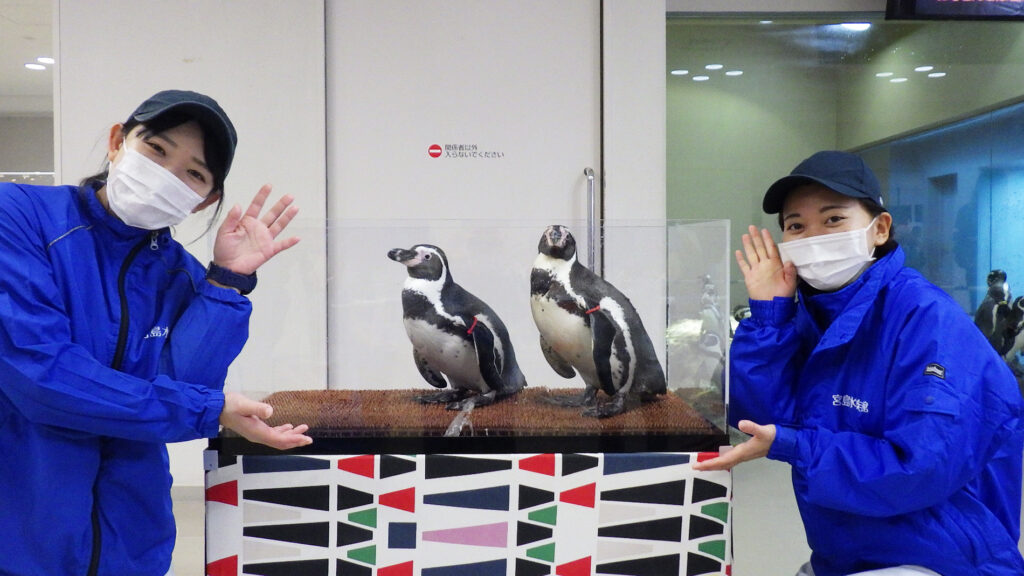
Photos provided by Miyajima Public Aquarium
The aquarium also offers various events that allow visitors to interact with animals, including feeding time for otters and photo sessions with penguins.
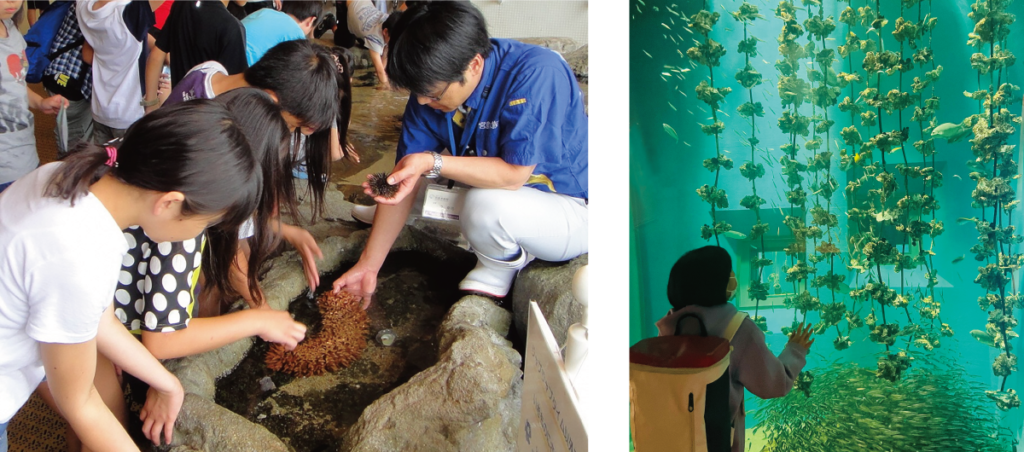
Photos provided by Miyajima Public Aquarium
The “oyster rafts” are full of large oysters on hanging scallop shells. (right)
You can also touch some sea creatures at the “Rocky Shore of Friendship” and observe oyster rafts, one of Hiroshima’s most famous seascapes, in the “Blessings of the Sea” tank. There is also a section where visitors can learn about oyster farming, and my daughter’s eyes lit up as she looked at the live oysters. “I didn’t know that oysters are farmed hanging up!” The Miyajima Public Aquarium was a wonderful place where we could actually see, touch, and enjoy the nature of the Seto Inland Sea with all our five senses.
After leaving the aquarium, my daughter said, “I want to eat oysters,” so we decided to buy some grilled oysters at a store near Itsukushima Shrine. I found it fascinating that learning about the ecology of sea creatures sparked my daughter’s curiosity about local food culture, and it for sure made our trip even more enjoyable.
Miyajima Public Aquarium
10-3, Miyajimacho, Hatsukaichi, Hiroshima
Phone: +81(0) 829-44-2010
Opening Hours: 9:00~17:00 (last admission at 16:00)
Closed: Irregular days due to maintenance and inspections
Admission:
Adults and High School Students ¥1,420
Junior High School Students and Elementary School Students ¥710
Children aged 4 or older ¥400
Free admission for children aged 3 or younger
※Events are subject to change. Visit the official website for more details.
Taking the Miyajima Ropeway to the spectacular Mt. Misen
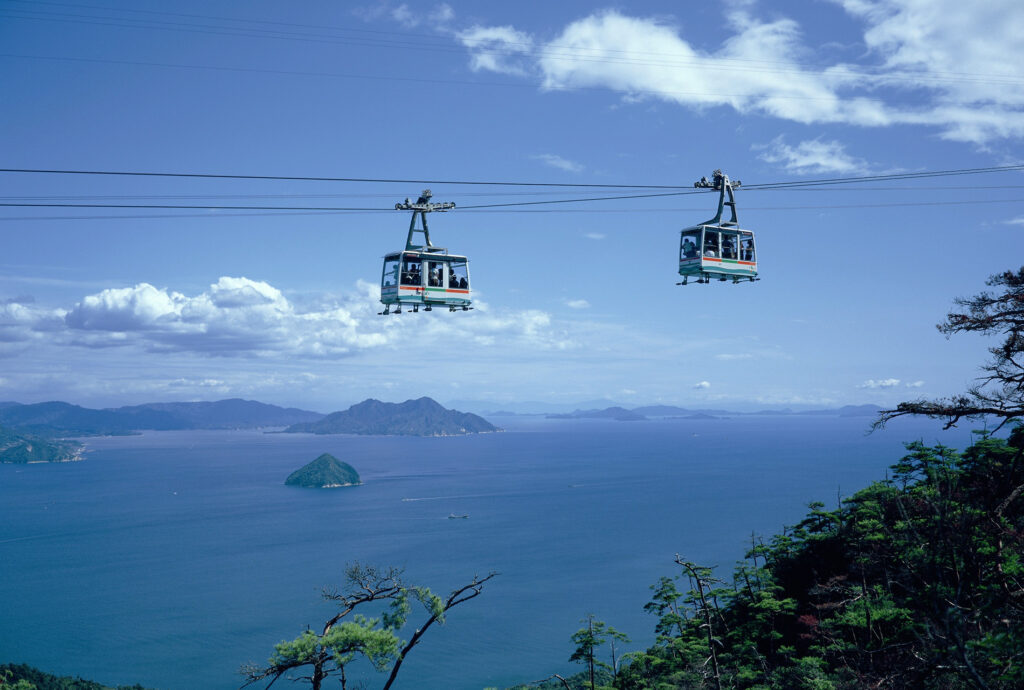
Photos provided by Hiroshima Tourism promotion Co., Ltd.
After leaving the Miyajima Public Aquarium, we decided to take the Miyajima Ropeway up Mt. Misen. It takes about 25 minutes from Momijidani Station to Shishiiwa Station, with one transit. From the ropeway, you can see the calm Seto Inland Sea lying below you, offering a spectacular view of the islands.
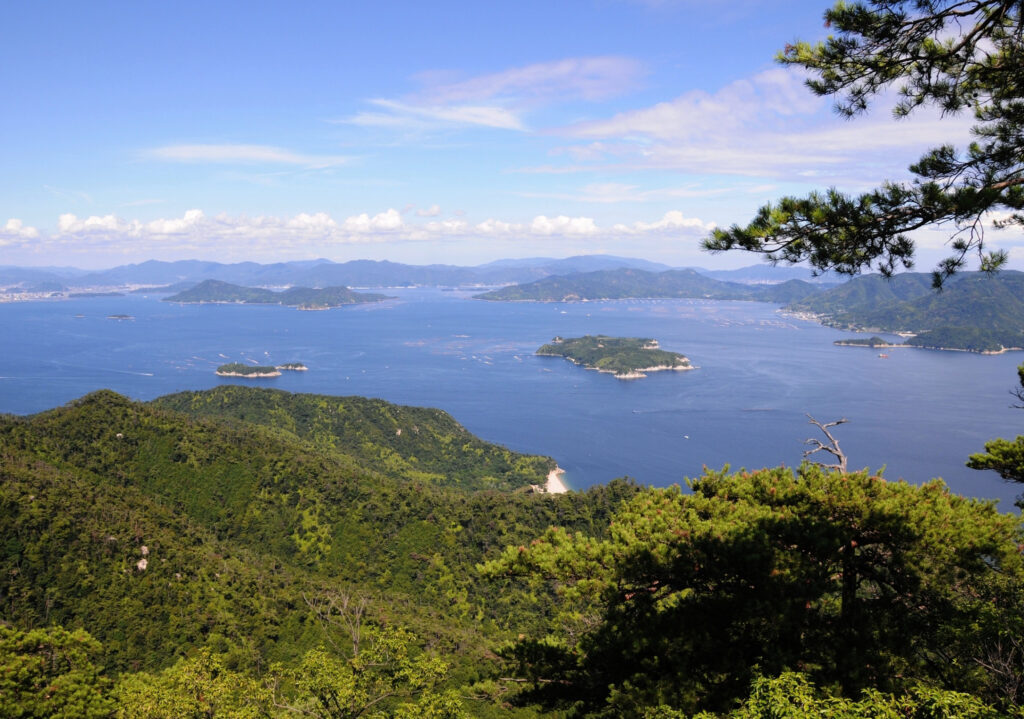
Photos provided by Hiroshima Tourism promotion Co., Ltd.
The observation deck right in front of Shishiiwa Station, the last stop, is one of the first scenic spots you can find on Mt. Misen. From this point, a 30-minute hike to the summit begins.
The top of Mt. Misen is the highest point of Miyajima, at 535m. The entire island of Miyajima has been considered sacred, and Mt. Misen is also an object of worship. In the year 806, after Kukai (Kobo Daishi) returned to Japan from the Tang dynasty, he founded Daihonzan Daisyoin Temple in Miyajima as a place for the ascetic practice of Shingon Esoteric Buddhism.
The beautiful, pristine nature of Mt. Misen, together with Itsukushima Shrine, was designated a World Heritage Site in 1996 as “Misen Wild Woods.” As we walked along the mountain path, a couple of deer appeared as if they were cheering us on.
Near the summit of Mt. Misen are various halls of Daishoin Temple, including the Misen Hondo Hall, which enshrines Kokuzo Bosatsu; Sankido Hall, which enshrines Sanki Daigongen, a group of deities of Mt. Misen; and Reikado Hall, which houses the sacred fire from Kobo Daishi’s training.
Walking 20 minutes from Shishiiwa Station, the Reikado Hall came into view first. In the Reikado Hall, you can find the fire that Kobo Daishi used in his training still burning after over 1,200 years. It is called the “Eternal Flame” and is one of the Seven Wonders of Mt. Misen. It was also one of the fires that were used to create the “Peace Flame” of the Hiroshima Peace Memorial Park. The sacred water in the large tea kettle in the Eternal Flame is said to cure all illnesses. “How can fire burn for over 1,200 years?” This is an intriguing, mysterious place, even for children.
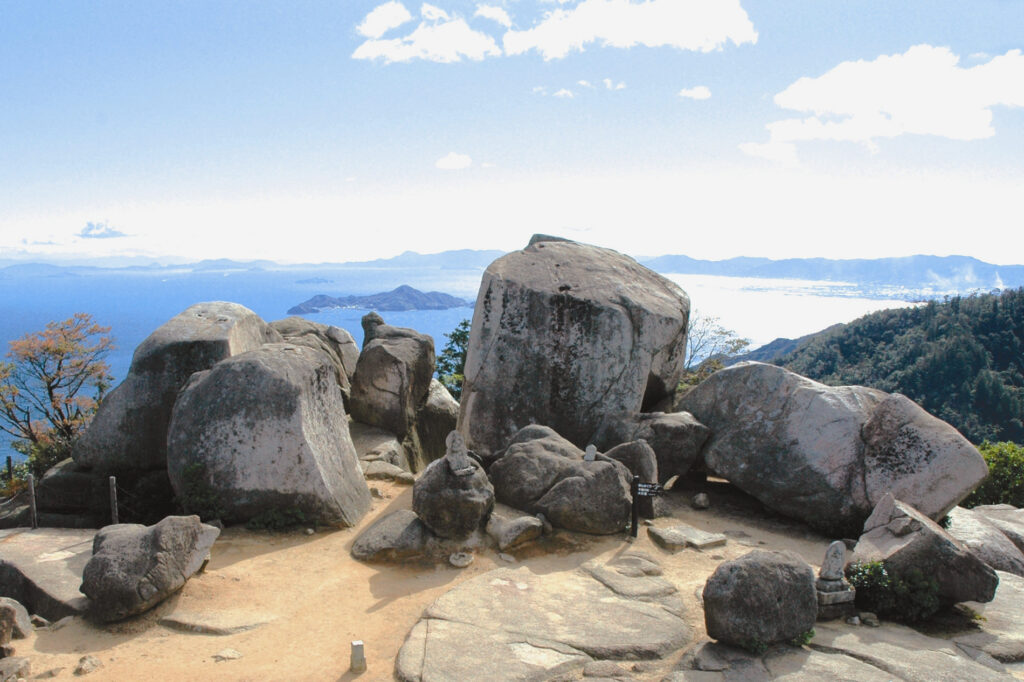
Photos provided by Hiroshima Tourism promotion Co., Ltd.
We then walked 10 minutes from the Reikado Hall and reached “Kuguri Rock,” a huge rock tunnel. The sheer size of the rock is overwhelming, but after passing through it, you will arrive at the top of Mt. Misen. From the Misen Observatory at the summit, you can enjoy a 360° panoramic view of the beautiful Seto Inland Sea if the weather permits.
Japan’s first prime minister, Ito Hirobumi, was so impressed with the view from the top of Mt. Misen that he said, “The true value of one of the three most scenic spots in Japan lies in the view from the top of the mountain.” He even invested his own money to build a mountain trail. Thanks to him, the walk to the summit is now easy enough even for beginners, and anyone can enjoy the view that’s as beautiful as he said it was.
Hiroshima Tourism promotion Co., Ltd. Miyajima Ropeway
Phone: +81(0) 829-44-0316
Opening Hours: 9:00~16:00 ※Last ropeway down is at 16:30 (may vary depending on the season).
Closed: Irregular days due to adverse weather conditions and inspections
Fee (round trip):
Adults (12 years old or older) ¥2,000
Children (6 years old or older) ¥1,000
※One child aged 5 years or younger can ride with a parent or guardian fee-free. The second child will be charged the children’s fee.
Strolling down the Omotesando Shopping Street for “Momiji-Manju” and “Shamoji Rice Paddles”
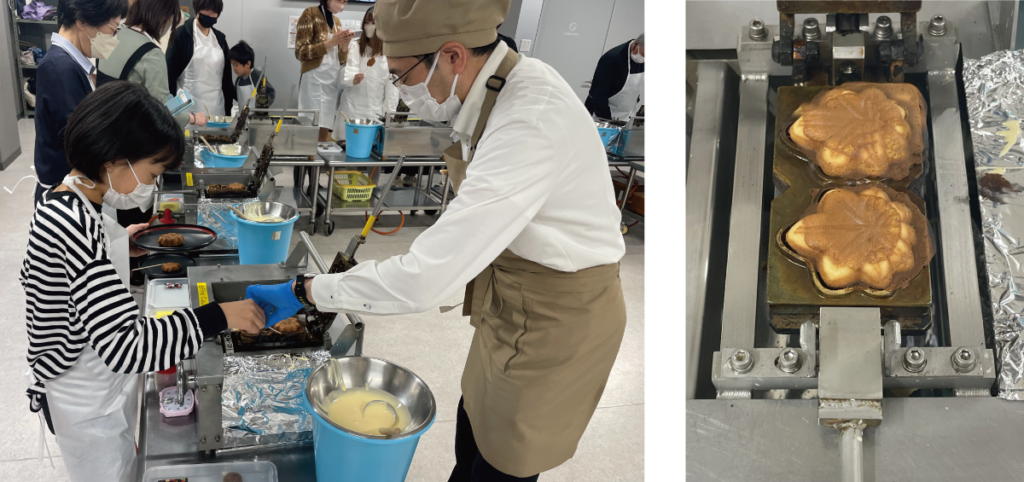
Making Momiji-Manju with “wings (crispy edges).” (right)
Getting off the ropeway, we wandered around the Omotesando shopping street, crowded with tourists searching for souvenirs. At the Yamadaya Miyajima Main Store, established in 1932, you can try Momiji-Manju making. The shop is extremely popular, and reservations are consistently booked up on weekends with families, couples, and foreign tourists. The process of making Momiji-Manju involves using a traditional hand-held pan, but there’s no need to worry. The staff will teach you step by step, and even first-timers can make Momiji-Manju without making any mistakes.
My daughter tried it as well. You just need to bake each side for about 30 seconds, six times. I could hear the participating children trying their best to count the seconds, staring at the clock. After a while, I heard them saying, “It’s done!” and “It’s baked!” My daughter made two kinds of Momiji-Manju, one with red bean paste and the other with chocolate. She was very happy to eat the freshly baked Momiji-Manju that she had just made herself. I highly recommend trying out this one-of-a-kind experience that is exclusive to Miyajima.
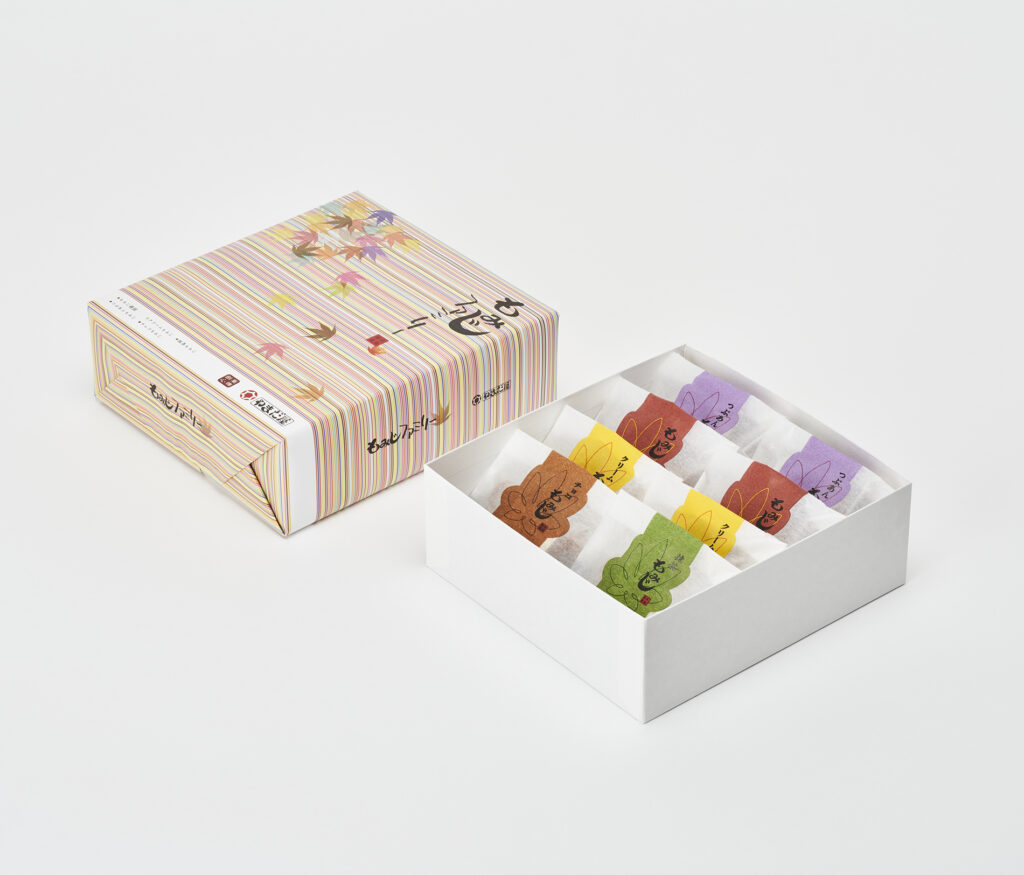
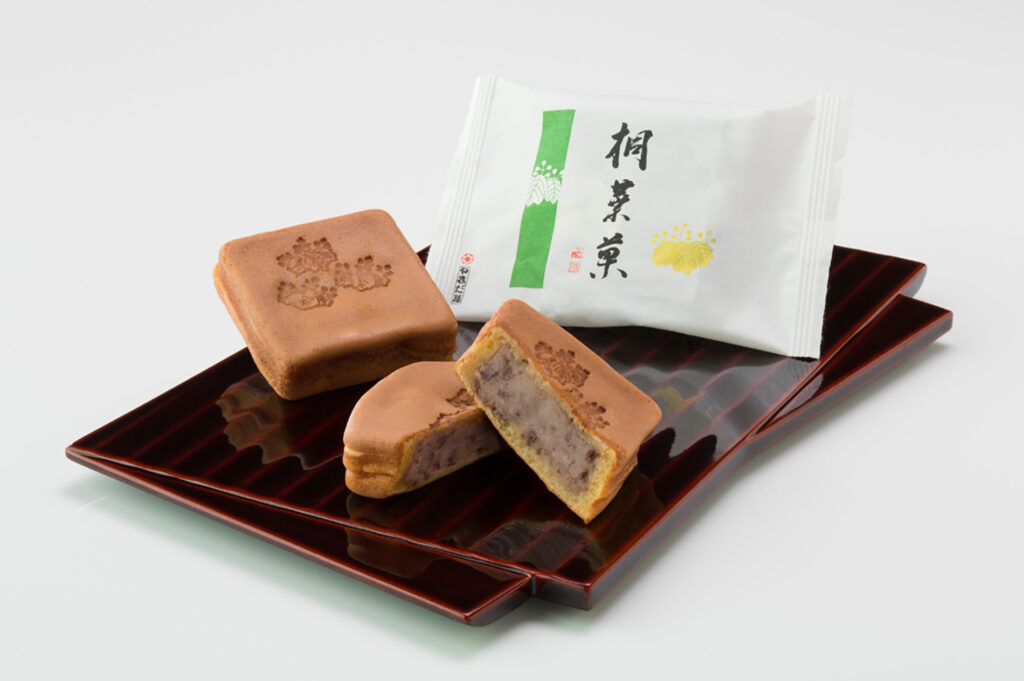
On the first floor of the Yamadaya Miyajima Main Store, you can find a wide variety of Momiji-Manju and other signature sweets on the shelves. Koshi-an (smooth red bean paste) is the most popular Momiji-Manju flavor, and cream and chocolate are the next most popular. They also offer seasonal flavors, so you may be able to find rare flavors when you visit.
Yamadaya Miyajima Main Store
835-1, Miyajimacho, Hatsukaichi, Hiroshima
Phone: +81(0) 829-44-0511
Opening Hours: 9:00~18:00 (Open year-round)
※Reservations are required for Momiji-Manju making. (Reservations are available three months prior for individuals and one year prior for groups.) Visit the official website for more details.
Finding your favorite “Miyajima Shamoji Rice Paddle”
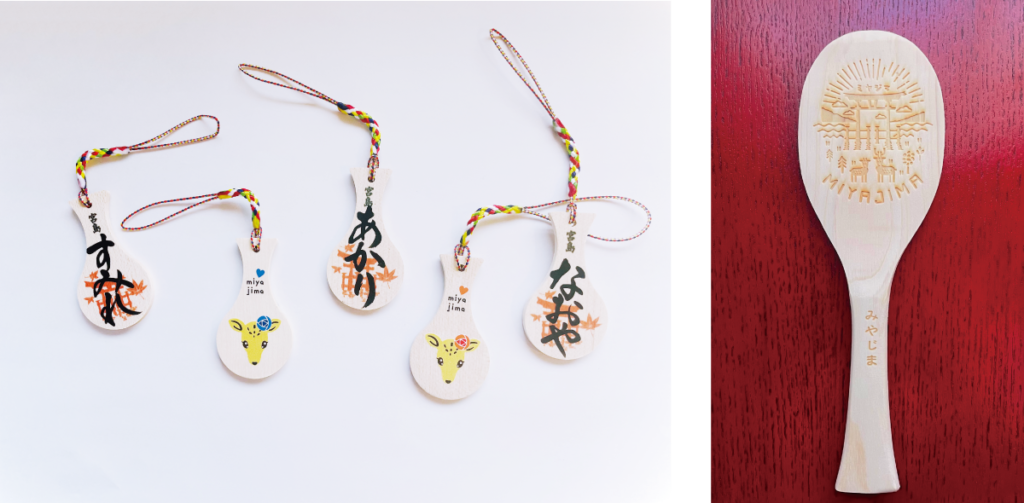
A Shamoji rice paddle with an illustration of the Miyajima deer. (right)
The Miyajima Shamoji Rice Paddle is said to have originated in the Edo period when a monk named Shinsen, who trained at Komyoin Temple and lived in Shinsenji Temple, came up with the idea of a Shamoji rice paddle and taught people of Miyajima how to make them. What inspired Shinsen to come up with a Shamoji rice paddle was the shape of a biwa, a musical instrument that you see Benzaiten holding.
In Miyajima, in addition to the normal Shamoji rice paddles for scooping rice, you can also find many types for different purposes, such as wishing for success in academia and competitions.
The ones with an illustration of cute Miyajima deer and the keychains are very popular, and you can also personalize the keychains with your name. Personalized keychains would also make great gifts for your friends or family members.
On the ferry ride home, my daughter told me, “I’ve become interested in the Seto Inland Sea and sea creatures, so I think I’ll research it for my summer assignment.” It made me happy that this trip stimulated her curiosity and broadened her interests.
Our trip to Miyajima was a fulfilling one, as we were able to have a peaceful time together, experiencing wonderful nature and cute animals. We also had fun learning about Miyajima’s history and culture through hands-on activities. Miyajima is a great place for family trips, even for 3-generation families. I highly recommend planning a visit with your loved ones.
